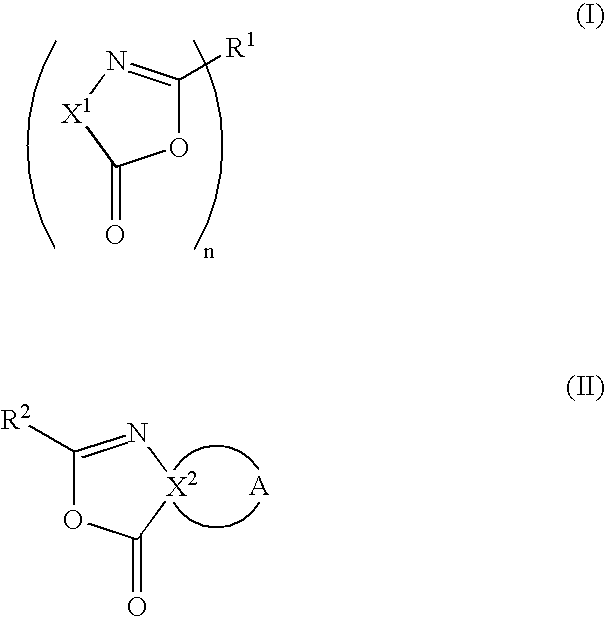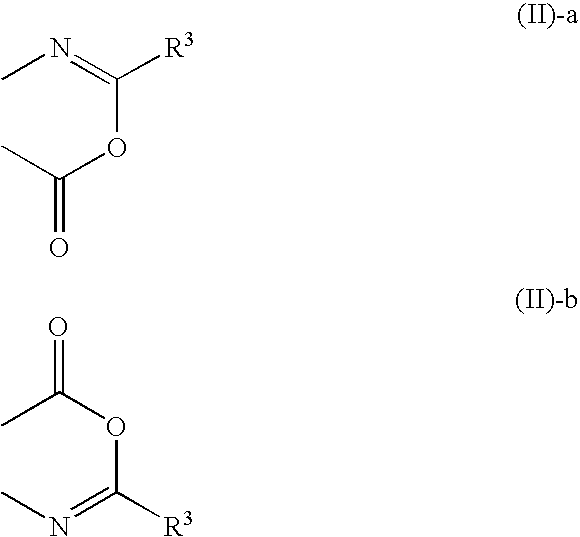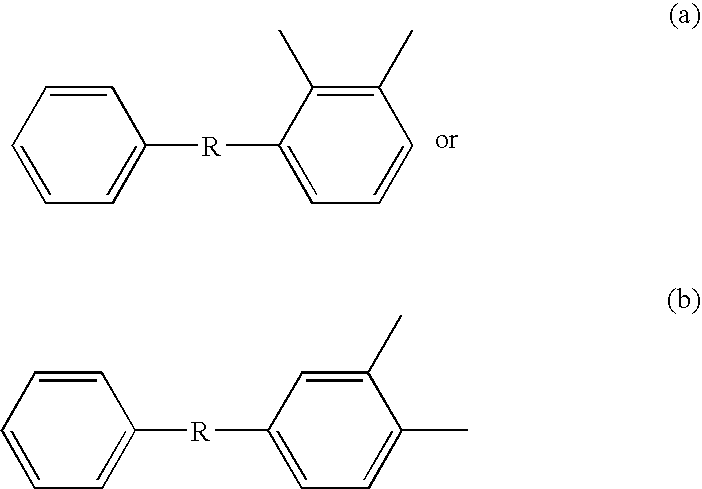Laminate film
a technology of laminate film and film spherical layer, applied in the field of laminate film, can solve the problems of reducing the degrading the film in haze and transparency, and not being able to maintain the required light resistance, etc., and achieve excellent transparency and maintain the effect of dimensional stability of the pen film
- Summary
- Abstract
- Description
- Claims
- Application Information
AI Technical Summary
Benefits of technology
Problems solved by technology
Method used
Image
Examples
example 1
[0178] (Polyester for Base Material Layer)
[0179] An ester exchange reaction between 100 parts of dimethyl naphthalene-2,6-dicarboxylate and 60 parts of ethylene glycol was carried out in the presence of 0.03 part of manganese acetate tetrahydrate as an ester exchange catalyst for 120 minutes while the mixture was gradually temperature-increased from 150° C. to 238° C. When the reaction temperature reaches 170° C. during the above process, 0.024 part of antimony trioxide was added, and after completion of the ester exchange reaction, trimethyl phosphate (solution prepared by heat-treating it, under a pressure of 0.11 to 0.16 MPa in ethylene glycol at 135° C. for 5 hours: 0.023 part as trimethyl phosphate) was added. Then, the reaction product was recharged into a polymerizer, temperature-increased up to 290° C. and allowed to undergo a polycondensation reaction under a high vacuum of 27 Pa or less, and after completion of the polymerization, 1% by weight, per 99% by weight of a poly...
example 2
[0186] A laminated polyester film was obtained in the same manner as in Example 1 except that the polymer for forming a base material layer contained no ultraviolet absorbent.
[0187] The thus-obtained film was measured for properties, and Table 1 shows the results. While the obtained film was inferior to the film of Example 1 in light resistance, it was a film excellent in scratch resistance, transparency, dimensional stability and adhesion to a hard coating layer.
examples 3 and 4
[0188] Laminated polyester films were obtained in the same manner as in Example 1 except that the polymer for forming a base material layer contained no ultraviolet absorbent and that the hard coating agent was replaced with agents (agent {circle around (2)} and agent {circle around (3)}) having ultraviolet-absorbing monomer contents shown in Table 1.
[0189] The thus-obtained film was measured for properties, and Table 1 shows the results. While the obtained films were inferior to the film of Example 1 in light resistance, they were films excellent in scratch resistance, transparency, dimensional stability and adhesion to a hard coating layer.
PUM
| Property | Measurement | Unit |
|---|---|---|
| heat shrinkage factor | aaaaa | aaaaa |
| light transmittance | aaaaa | aaaaa |
| haze | aaaaa | aaaaa |
Abstract
Description
Claims
Application Information
 Login to View More
Login to View More - R&D
- Intellectual Property
- Life Sciences
- Materials
- Tech Scout
- Unparalleled Data Quality
- Higher Quality Content
- 60% Fewer Hallucinations
Browse by: Latest US Patents, China's latest patents, Technical Efficacy Thesaurus, Application Domain, Technology Topic, Popular Technical Reports.
© 2025 PatSnap. All rights reserved.Legal|Privacy policy|Modern Slavery Act Transparency Statement|Sitemap|About US| Contact US: help@patsnap.com



